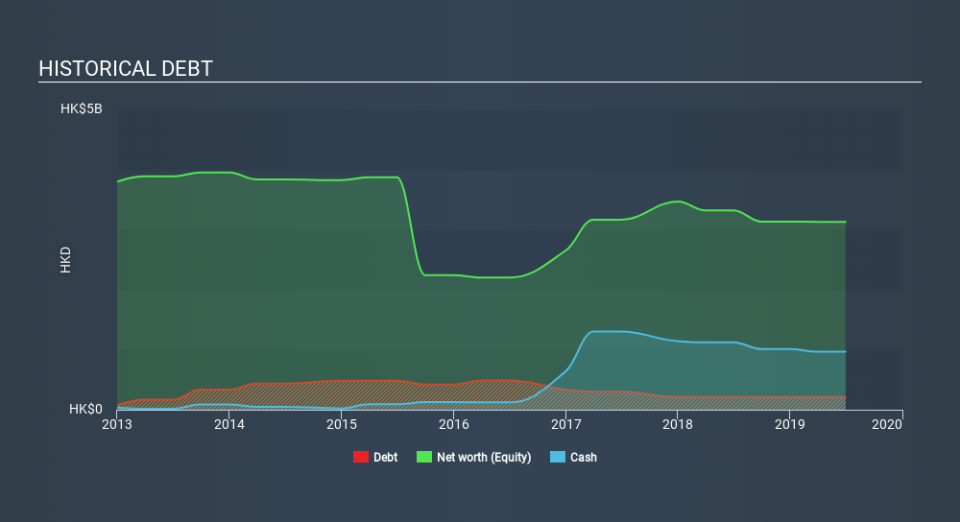Is New Times Energy (HKG:166) Using Debt Sensibly?

Warren Buffett famously said, 'Volatility is far from synonymous with risk.' When we think about how risky a company is, we always like to look at its use of debt, since debt overload can lead to ruin. We can see that New Times Energy Corporation Limited (HKG:166) does use debt in its business. But is this debt a concern to shareholders?
When Is Debt Dangerous?
Debt and other liabilities become risky for a business when it cannot easily fulfill those obligations, either with free cash flow or by raising capital at an attractive price. Ultimately, if the company can't fulfill its legal obligations to repay debt, shareholders could walk away with nothing. However, a more usual (but still expensive) situation is where a company must dilute shareholders at a cheap share price simply to get debt under control. Of course, the upside of debt is that it often represents cheap capital, especially when it replaces dilution in a company with the ability to reinvest at high rates of return. The first thing to do when considering how much debt a business uses is to look at its cash and debt together.
See our latest analysis for New Times Energy
What Is New Times Energy's Net Debt?
As you can see below, New Times Energy had HK$210.8m of debt, at June 2019, which is about the same the year before. You can click the chart for greater detail. However, it does have HK$965.4m in cash offsetting this, leading to net cash of HK$754.6m.
A Look At New Times Energy's Liabilities
Zooming in on the latest balance sheet data, we can see that New Times Energy had liabilities of HK$143.4m due within 12 months and liabilities of HK$204.6m due beyond that. On the other hand, it had cash of HK$965.4m and HK$19.0m worth of receivables due within a year. So it can boast HK$636.2m more liquid assets than total liabilities.
This luscious liquidity implies that New Times Energy's balance sheet is sturdy like a giant sequoia tree. With this in mind one could posit that its balance sheet is as strong as beautiful a rare rhino. Succinctly put, New Times Energy boasts net cash, so it's fair to say it does not have a heavy debt load! There's no doubt that we learn most about debt from the balance sheet. But you can't view debt in total isolation; since New Times Energy will need earnings to service that debt. So if you're keen to discover more about its earnings, it might be worth checking out this graph of its long term earnings trend.
Over 12 months, New Times Energy made a loss at the EBIT level, and saw its revenue drop to HK$300m, which is a fall of 36%. That makes us nervous, to say the least.
So How Risky Is New Times Energy?
Statistically speaking companies that lose money are riskier than those that make money. And we do note that New Times Energy had negative earnings before interest and tax (EBIT), over the last year. Indeed, in that time it burnt through HK$12m of cash and made a loss of HK$170m. But the saving grace is the HK$754.6m on the balance sheet. That kitty means the company can keep spending for growth for at least two years, at current rates. Even though its balance sheet seems sufficiently liquid, debt always makes us a little nervous if a company doesn't produce free cash flow regularly. When we look at a riskier company, we like to check how their profits (or losses) are trending over time. Today, we're providing readers this interactive graph showing how New Times Energy's profit, revenue, and operating cashflow have changed over the last few years.
If you're interested in investing in businesses that can grow profits without the burden of debt, then check out this free list of growing businesses that have net cash on the balance sheet.
If you spot an error that warrants correction, please contact the editor at editorial-team@simplywallst.com. This article by Simply Wall St is general in nature. It does not constitute a recommendation to buy or sell any stock, and does not take account of your objectives, or your financial situation. Simply Wall St has no position in the stocks mentioned.
We aim to bring you long-term focused research analysis driven by fundamental data. Note that our analysis may not factor in the latest price-sensitive company announcements or qualitative material. Thank you for reading.


